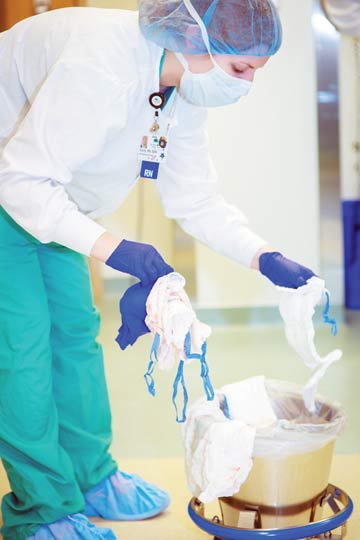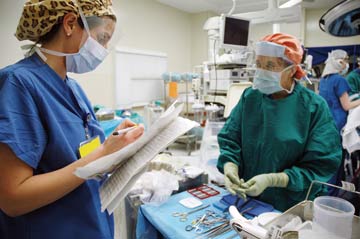There are still plenty of facility leaders who think a methodical manual count is all that's needed to prevent retained objects. The data certainly throws a wrench in that argument. "More than 88% of retained sponges occur when the count is reported as being correct," says Victoria M. Steelman, PhD, RN, CNOR, FAAN, a patient safety expert and associate professor at the University of Iowa College of Nursing in Iowa City.
While a manual count process will always remain a critical part of preventing retained objects like sponges (the item most commonly left behind), needles and surgical instruments, there are plenty of compelling reasons for facilities to bolster their prevention efforts with adjunct technology like radiofrequency (RF) or barcode scanning technology.
The combined high-touch/high-tech approach to preventing retained objects is now lauded by professional associations like AORN. In fact, AORN specifically recommends that facilities now consider using technology to assist with their manual sponge-counting process. Plus, there's a growing body of evidence showing that technology not only reduces the likelihood of a retained object, it's also less costly in the long run than relying solely on a manual count process.
Dr. Steelman was the lead author of one such study, which looked at 319 retained surgical sponges (RSS) over a 5-year-period, the largest sample of RSS events in published literature (osmag.net/kM2qFS). The study — "Retained surgical sponges: a descriptive study of 319 occurrences and contributing factors from 2012 to 2017—" concluded that facilities consider "the addition of sponge-detection technology to verify that no sponge remains in the patient prior to discharge from the operating or procedure room."
The technology used to prop up manual processes can be broken down into 2 categories:
- Counting systems. ?Sponges feature bar codes that are manually scanned with and recorded by a computerized device as they're placed in the sterile field. The sponges are scanned again when they're removed from the field. With this method, the closing count can be confirmed by an automated tally of how many sponges have been used.
- Detection systems. ?Unlike bar-code scanning and counting systems, which can only verify the count and alert surgical staff that a sponge is unaccounted for, a sponge detection system can actually locate the missing sponge for you. These systems feature sponges with individual RF identification tags as well as a wand device, which is passed over the patient and signals an alert when it detects a sponge.
While there's a clear advantage to being able to physically locate a missing sponge, both systems provide some solid protection from facilities' greatest barrier in preventing retained objects: human error.
.svg?sfvrsn=be606e78_3)


.svg?sfvrsn=56b2f850_5)